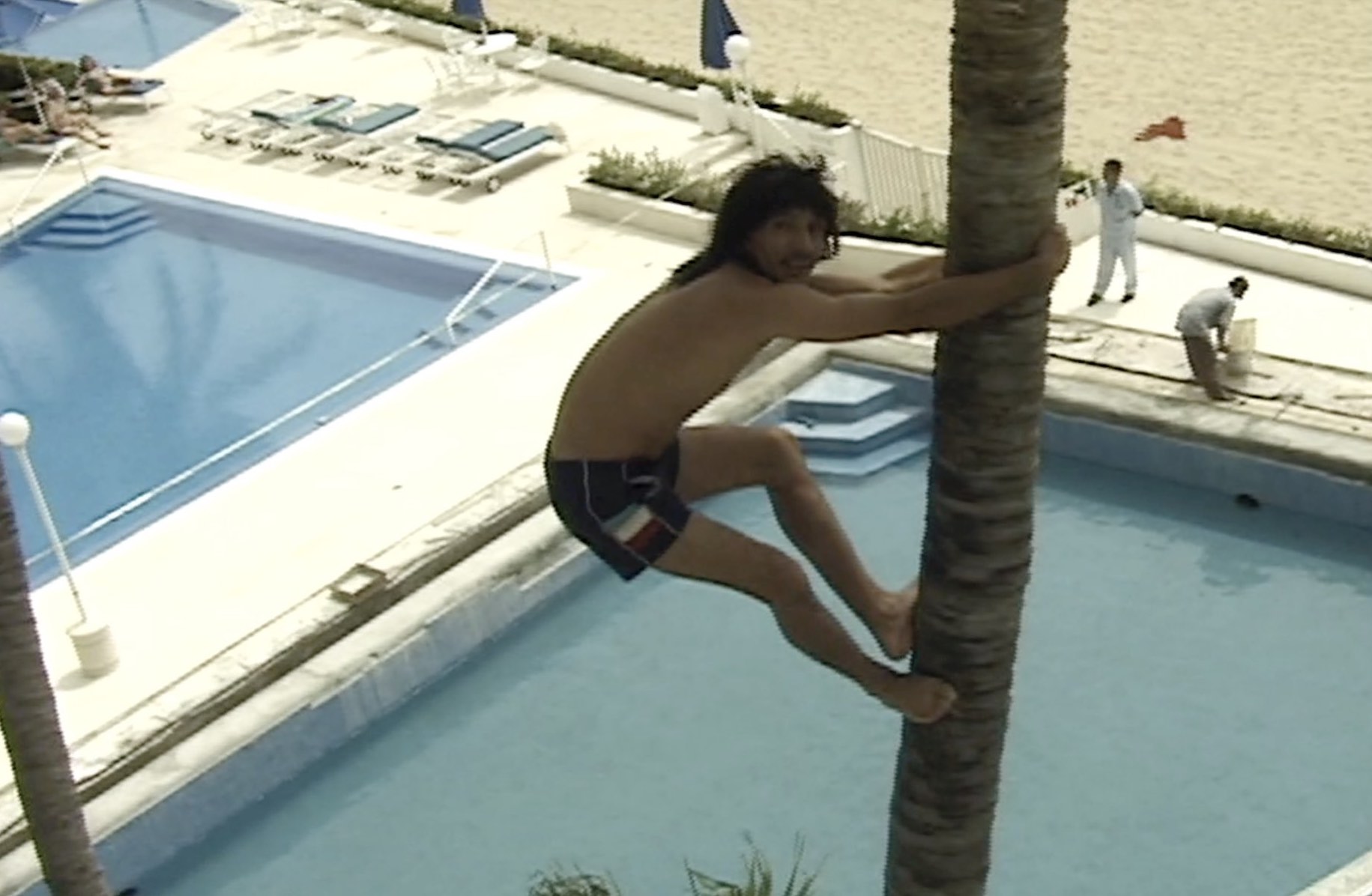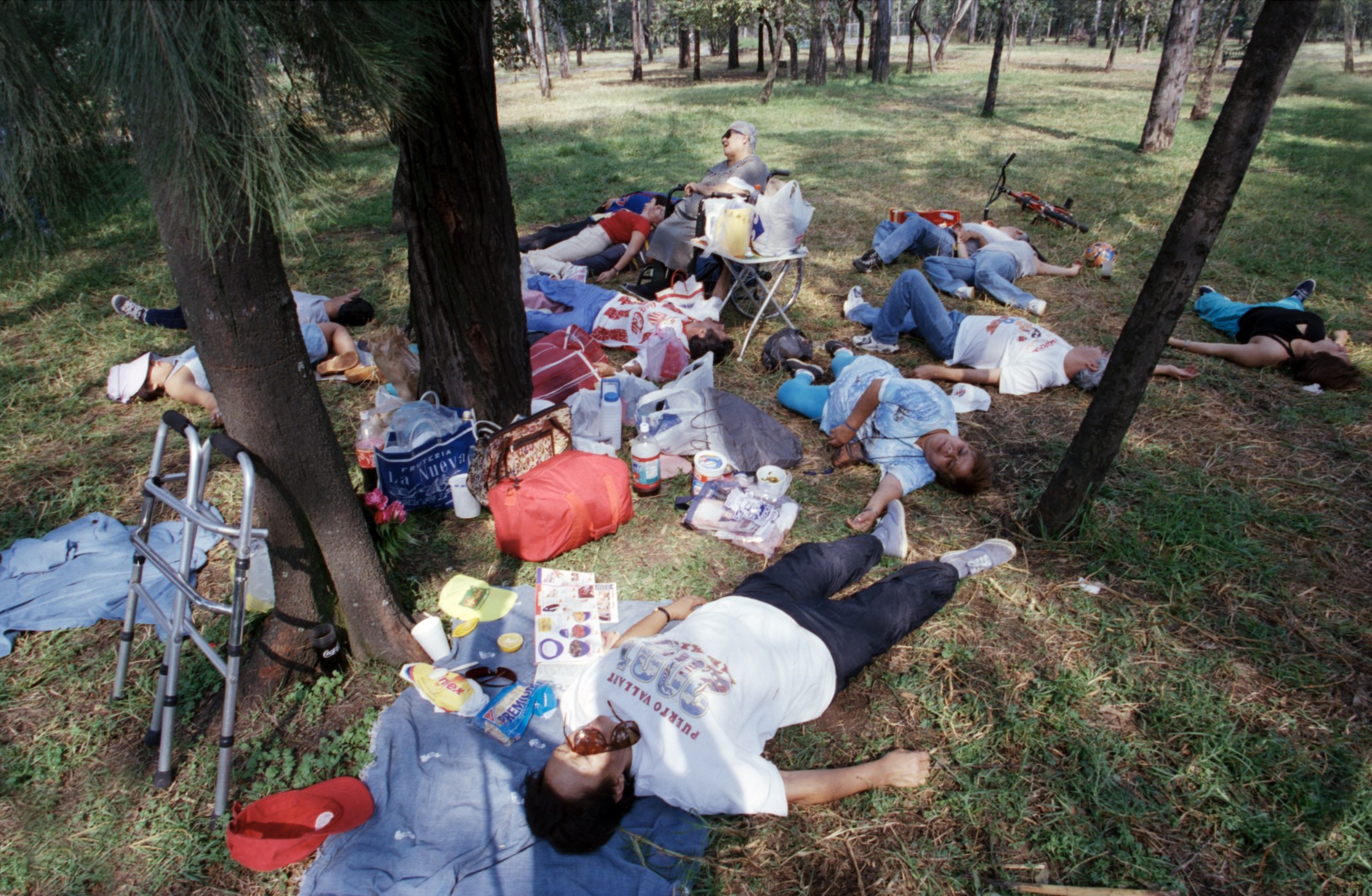
Review
Aesthetic Material Available: Miguel Calderón at MARCO.
by Rubén Gutiérrez
Reading time
5 min
In a current exhibition of work by Miguel Calderón, one finds on offer a prolific career of over 20 years. With a training in experimental film in San Francisco, Miguel’s work has always been very close to the logic of that medium. From the beginning his aim was to make films; however, upon his return to Mexico, the artist participated in planning a series of exhibitions and an independent project for the dissemination of alternative art (what would later become the mythical artist-run space, La Panadería [The Bakery]). From that point he was, in his own words: “happily caught up in art production.” Nevertheless, he managed to produce video works such as La discípula del velocímetro (2000), which premiered at the Rotterdam Film Festival and anticipated future masterpieces like David Lynch’s Inland Empire (2006).

Miguel has always worked without prejudice, making audiovisual pieces without thinking about whether they would be distributed in galleries or film festivals. However, his work eventually came to overlap with the world of film, a situation that is now normalized thanks to factors like the democratization of technologies and the assimilation of mass phenomena. The scenarios that Miguel constructs are a cross between a photographic aesthetic close to documentary forms, references to classical art, and the everyday. Their development alludes to the encounter between scenes of the immediate environment, images reminiscent of a family album that seems too close to us, elements of popular culture, and forms derived from certain urban subcultures. A piece like Chapultepec (2003) is a perfect example of the way Miguel operates. His method of artistic production consists of emphasizing the oddity of everyday situations and of using the casual participation of those characters surrounding him.
In facing these pieces, I can’t help but think of the cinema of Rainer Werner Fassbinder: Miguel’s work could also be considered a way of approaching a certain social life, of approaching his encounter with others. Miguel has always believed in failure as a method of learning. In the case of Demonios Juveniles (1992-present) he succeeds in generating a narrative game with his own discarded material and content in diverse and strange formats, presenting us with even stranger moments that invoke less a narrative film than a stream of consciousness. And this question directly challenges that logic of cinema: Why should cinema tell stories in a linear manner? Why can’t it be more like a stream of thoughts? Perhaps that is why it is particularly easy for him to approach certain finished works as though they were found objects and to reappropriate them, to continue working on them, re-editing them in search of different results.

Moribundo (1999) plays with the notion of the found object, something appropriated and intervened upon in order to reverse its meaning. This piece works perfectly in our current pandemic as a bizarre meme in which the disrupted advertising message is a vehicle containing an apocalyptic warning. “Art helps you to navigate reality,” maintains the artist, while his piece points to the naivety of any political or cultural system that insists on the possibility of preserving a certain normalcy in a world that is falling apart. With his works, Miguel reflects on the ideological contradictions of a society immersed in a political and social crisis where it is difficult to express oneself in the face of a future that does not seem to exist. Such is the case with Candidato Ciego (2021), which, across a series of posters, does not distance itself from the forms of distribution and of political propaganda. This powerful piece seems to comment on the emergence of political projects that resonate from the surface, but that have not demonstrated their effectiveness or reason for existing and, therefore, become social ghosts that are sustained by fictions.

Human-animal relations, daily life, stories and urban legends, disasters, contemporary art, the current socioeconomic and political situation: these are all topics that we can appreciate in this exhibition. The result is a body of work that, more than a succession of references, presents a true intersection among them. It is from there that the work of Miguel Calderón operates. He is someone who has incorporated doubt and humor into his being-in-the-world, and as a consequence into his artistic process as well. The provocative, apparently harmless, gestures in his works are the product of a deep and genuine questioning of what constitutes his reality and his condition as an artist.
Miguel knows that the artist cannot stop making art in favor of making films; rather, the artist must harness art in order to make films. The use of these hybrid production methods allows Miguel Calderón to invent alternative scenarios that in turn invite us to reflect on our own immediate experiences, which are saturated with nonsense.
— Rubén Gutiérrez
Translated to English by Byron Davies
Aesthetic Material Available by Miguel Calderón can be visited at the Museum of Contemporary Art, Monterrey (MARCO) until April 17, 2022.
Cover picture: Miguel Calderón, Demonios Juveniles, 1988 (video still), courtesy of the artist and kurimanzutto.
Published on February 4 2022